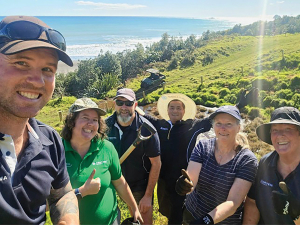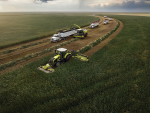We're losing it, soil that is. And we need to do more to stop the slide of this precious asset into waterways and ultimately the ocean.
It makes economic sense to do so and also helps better protect our waterways and aquatic life from the effects of sedimentation.
The scale of this loss of a farmer’s most precious resource is huge in New Zealand. We lose it to the ocean about 10 times faster than the rest of the world: 200 million to 300 million tonnes slide into the sea every year.
That equates to an astonishing 1.1% to 1.7% of total global soil loss to the ocean despite us having only 0.1 per cent of total land area.
It’s a reflection of the erosion that results from our mountainous and hilly landscape, adverse weather events and land use practices.
The resulting sedimentation of our waterways contributes to poor water quality and interferes with aquatic flora and fauna, as well as productive capacity of our land.
Therefore, preventing or at least minimising current and potential erosion is a key to the economic and environmental sustainability of our farming.
To effectively tackle erosion it’s important for farmers and others to look at the various types such as splash, sheet, rill, gully, tunnel, channel and mass movement erosion. The latter is common – the erosion of soil or rock by gravity-induced collapse. It’s usually triggered by groundwater pressure after heavy rain.
But it can also have other causes, notably streams undercutting the base of a slope or earthworks. Movement can be either rapid and near instantaneous (landslides, avalanches, debris flows) or slow and intermittent (earth flows and slumps).
Earth and soil slip movement are also often noted after the removal of vegetation from critical slopes associated with soil disturbing activities. These sorts of slopes need to be identified before development starts and should be avoided wherever practicable.
Tackling the source of the problem like this is generally most effective in preventing sedimentation of waterways. The main emphasis should be on erosion control itself rather than controls to prevent eroded sediment from entering waterways.
A gram of prevention is worth many kilos of cure in this instance.
The two main approaches to erosion control are mechanical and biological.
Mechanical methods such as terracing, debris dams, detention dams, retaining walls and other engineering structures can have immediate benefit by removing excess water and artificially strengthening slopes or by capturing sediment.
Biological methods – the use of live vegetation – are the more economic means of rehabilitation of eroded land.
Planting helps ‘hold’ soil and provides ground cover so that the elements don’t wear away directly on the soil.
Also, planting poplar and willow poles and stakes is a good way to restore physical strength to slopes and minimise slipping and slumping.
Hefty 3m poles should be planted at least 600mm deep. Lighter 2m poles in sheep-only situations and retired areas should be planted 500mm deep. Also, 1m stakes at 400mm deep can be effective, depending on the dryness of the site, but can only be used where stock have no access.
Ensuring suitable plant species are used and lower stocking rates on steep land are other practices that can reduce erosion. In cases where severe erosion is present it may be best to retire land from grazing and, if possible, change land use to plantation forestry.
Waikato Regional Council staff can advise on best practice at individual sites. The council also has funding (up to 70% of costs) available to help farmers in priority, susceptible west coast and Waipa catchments to do erosion control and other land management activities.
Funding covers:
tree planting, including pole planting and native plant species
fencing off marginal land or bush from active use
riparian management (fencing, planting and stock water reticulation)
farm plans to identify soils, land use capability and environmental projects.











